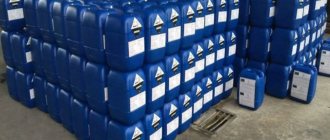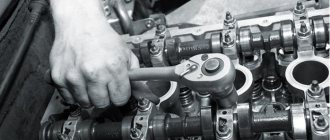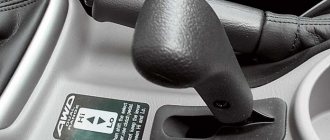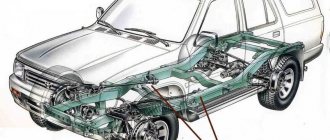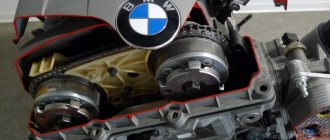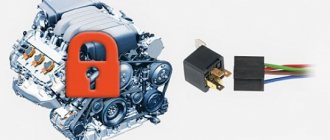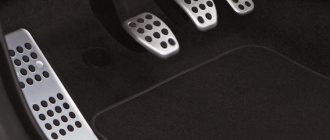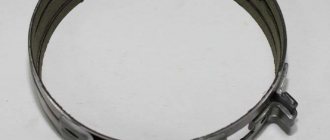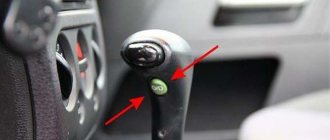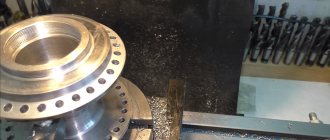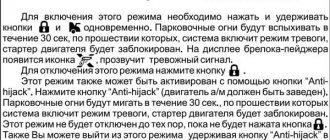What is urea for diesel
Attempts to remove one of the components of exhaust gases lead to an increase in the content of the other. If you try to get rid of soot in diesel exhaust, harmful nitrogen oxide will begin to go off scale and vice versa. Designers developed filters to combat soot, which began to be installed in the fuel system of diesel engines. To neutralize harmful nitrogen oxide, it was necessary to come up with a fundamentally new system involving the use of urea.
Diesel urea, sold in car dealerships, is a liquid consisting of water and a chemical compound that decomposes into ammonia and carbon dioxide. The ammonia obtained from this mixture can be used to neutralize hazardous emissions. This process takes place in a special SCR catalyst.
Urea consumption depends on engine size, so trucks consume much more of the compound than cars. But, contrary to the negative expectations of motorists, the use and maintenance of such an exhaust gas purification system is relatively inexpensive, especially for passenger cars.
How the system works
A complete exhaust gas purification system for a diesel engine consists of a catalyst, particulate filter and SCR system. How does urea work in cleaning step by step:
- Exhaust gases enter the catalyst and particulate filter. Soot retention occurs, fuel particles burn out and carbon monoxide and hydrocarbons are removed.
- A certain amount of AdBlue liquid is injected into the pipe between the particulate filter and the SCR converter using a nozzle. Urea molecules break down into ammonia and isocyanic acid.
- Ammonia combines with nitrogen oxide, the most harmful component of spent diesel fuel, and the molecules break down, resulting in the formation of water and nitrogen. Harmless exhaust is released into the atmosphere.
SCR system diagram
Why is urea needed for diesel?
Engineers are constantly looking for an answer to the question - how to reduce the amount of harmful emissions? Reducing engine volumes is unlikely to have a positive impact on the situation - people are too dependent on road transport, which allows us to deliver the goods we need by land. The carrying capacity of trucks will be reduced, resulting in the need to make several trips instead of one. An alternative way that can and should be used is to neutralize emissions from internal combustion engines.
Using an SCR catalyst and urea is one way to significantly reduce diesel engine emissions. Moreover, the component itself is absolutely harmless to humans and the environment. The system independently calculates the required amount of the component based on data on the current intensity of engine use. The greater the load, the more urea is injected into the SCR catalyst. Thus, the use of urea helps reduce harmful emissions.
How to choose AdBlue
The entry of foreign substances or diesel fuel into the urea tank is strictly unacceptable and can lead to costly repairs. In addition, you can only pour a solution of a certain composition, which is produced under a license from the German patent holder. Quality is not guaranteed in any other way.
Counterfeit manufacturers often circumvent legal restrictions by not using the AdBlue designation on the canisters and indicating in advertising that their product performs the same functions, but at a much lower price.
After refueling with such substances, failures of injection system components, as well as expensive catalysts, occurred. Even if there are no physical breakdowns, the system will most likely, based on information from its sensors, notice a discrepancy and go into emergency mode.
Therefore, all statements about 100% analogue should be ignored. Moreover, you should not hope to independently make a solution from the agricultural fertilizer of the same name.
Of course, counterfeit manufacturers can display on their labels both the registered AdBlue trademark and a link to a manufacturer licensed by the copyright holder (a list of these can be found on the Internet). Here everything depends on the honesty of the trading organization and the availability of certificates of conformity.
The license is issued by the German organization VDA. Canisters must be airtight and sealed, and the shelf life should not exceed one year. There is no difference between truck and passenger use, as well as between car brands.
Pros and cons of the system
Reducing the harmful emissions of diesel engines into the atmosphere is not the only advantage of the SRC system. Also, using SRC has the following advantages:
- engine power increases significantly;
- there is a slight decrease in the level of fuel consumed;
- low fluid consumption - a passenger car will travel 5-10 thousand km on one canister.
However, the use of urea also has its disadvantages, which largely make its use in diesel vehicles impractical. These include:
- increasing complexity of the system, which leads to more frequent breakdowns;
- additional maintenance costs (an AdBlue canister will cost from 500 rubles);
- freezing at temperatures below -11 °C.
It is the inability to use AdBlue at standard temperatures for domestic winter that makes it impractical in Russian conditions, even though the urea tank is equipped with special heating to prevent the liquid from freezing.
At the same time, diesel cars purchased in Europe are equipped with this system by default; they are now freely sold on the Russian market. It is also necessary to equip your “iron horse” with such a system when traveling to Europe - otherwise you may face a rather large environmental fine. Therefore, a considerable number of domestic owners of diesel cars still have to maintain the SRC system, if their car is equipped with one, and buy urea.
Ecology and diesel engines
First, you need to understand how these concepts are related to each other, and why diesel internal combustion engines are not as good as is commonly believed.
As technology developed and improved, internal combustion engines began to be subject to more and more stringent requirements regarding the harm of the exhaust gas they emit. And if in the case of gasoline engines the problem was solved quite simply by installing catalytic converters in the exhaust system, then with diesel engines there are much more difficulties.
The catalysts are mounted directly into the exhaust system, so no significant changes to the design are required. The neutralizer body has double walls, between which there is a shell made of heat-resistant material. Inside there is a kind of honeycomb made of metal or ceramics. A special material is applied on top of the honeycombs, which reacts with the exhaust. Essentially, this substance covers the honeycomb and is a catalyst that allows the conversion of harmful chemical compounds into nitrogen, water and carbon dioxide through oxidation.
Various catalysts have been developed for gasoline engines, where the main components are rhodium, platinum and palladium. Palladium and platinum are able to neutralize carbon monoxide, and rhodium is distinguished by its ability to interact with nitrogen oxides. Catalysts serve a long time and effectively, they are simple to manufacture and easily installed in the exhaust system of a car.
The situation with diesel engines is much more complicated. Among the toxic elements released during the combustion of diesel fuel in the form of exhaust, soot and nitrogen oxide are especially noteworthy. Soot is formed in fairly large quantities, which is due to the peculiarities of the formation of the air-fuel mixture in diesel internal combustion engines.
Soot is considered a very dangerous carcinogen that can cause cancer. It is also important that the desire to reduce the amount of soot leads to the formation of excess nitrogen oxide. And if you reduce the amount of nitrogen oxide, the volume of soot increases in parallel. A kind of vicious circle.
To cope with the problem of excess soot, special particulate filters are used in the designs of diesel cars. They work as catchers. Soot settles on the surface of the filter, and if there is an excess of it, the afterburning system is automatically activated. This helps restore the filter’s operation and normalize its throughput properties.
The latest development in improving the environmental friendliness of diesel engines is the use of urea.
Using urea to clean exhaust
Tightening environmental regulations and standards has pushed automakers to create even more advanced systems, which are now actively used on diesel internal combustion engines. Such solutions made it possible to reduce the amount of nitrogen oxide.
One of the most common cleaning schemes is Bluetec technology. This system uses a whole range of exhaust cleaning elements:
- particulate filter;
- oxidation catalyst;
- liquid system for neutralizing nitrogen oxide;
This solution was developed and is actively used by the German auto giant Mercedes-Benz on various models of commercial and passenger diesel cars. Trucks equipped with Bluetec have a separate tank into which an active reagent called AdBlue is poured. The specified reagent is a solution of urea with water (water and ammonia). A special dosing device automatically injects a urea solution into the exhaust system of a diesel car, where the exhaust gases and urea solution for diesel are mixed.
After mixing the urea with the exhaust, the specified mixture enters the SCR (selective catalytic reduction) converter. This neutralizer is distinguished by the fact that it works on a selective principle. Ammonia, which is found in diesel urea, reacts with nitrogen oxides under the influence of the catalytic layer in the converter and high temperatures of up to 300 degrees Celsius. The result is the decomposition of nitrogen oxides into nitrogen and water. Other toxic compounds also burn out in the neutralizer. A similar scheme is used on passenger cars with the specified cleaning system.
Purpose of the SCR system
The abbreviation SCR means selective catalytic work to decompose nitrogen oxides after they have formed, as opposed to measures to prevent their occurrence, that is, without an undesirable decrease in temperature.
In this way, it is possible to very radically destroy toxic compounds of nitrogen and oxygen, using a fairly simple substance - urea, as well as a special catalytic converter with the appropriate controls and controls.
What are they made from?
Urea for diesel is a special liquid consisting of two components: urea itself (urea) and demineralized water. The concentration of pure urea in the finished product is 32.5%, the remaining 67.5% is pure water without any minerals.
On the European market, the product received the euphonious name AdBlue and is manufactured under the supervision of the VDA (Association of the German Automotive Industry). Only VDA-certified manufacturers are authorized to use the AdBlue® trademark in the manufacture and sale of their products.
Characteristics and Application
A distinctive feature of the use of urea is its harmlessness to the human body. This solution is used in diesel cars equipped with an SRC neutralization system, such as Mercedes, KamAZ, Scania, Ural, Daf, Citroen and Man, in the form of a consumable working fluid. It needs to be filled to reduce the harmfulness of exhaust emissions, namely to reduce the content of nitrogen oxide by 90%. After adding the solution, the exhaust gases comply with international environmental standards Euro-4, Euro-5 and Euro-6.
To get a consultation
We will answer any of your questions!
Leave your phone number and we will contact you as soon as possible!
Don't piss? I mean, it’s not scary... It’s really like filling up the washer fluid. But everything unfamiliar is scary. The most frightening thing is what will happen when AdBlue runs out?! You can drive without washer, but without urea?! That's right - question. At my own peril and risk, I drove almost dry trying to figure out WHAT diagnostic messages the car would give out. Got it. All photos below.
The first message - the first bell - Top up AdBlue - on the central screen of the instrument panel between the tachometer and speedometer. The manual says that the minimum level at which the inscription appears is 2.4l. Yes. How much to fill? What is the consumption of this urea per 100 km of travel?
The tank volume is 35 liters - that’s what the dealer said at first. Then I corrected myself that my model has a 15 liter tank. The numbers in the manual are different! It says 11.5 or 25 liters... which one exactly? According to the indication in the maintenance menu, apparently 11.5l. Since after filling 10 liters the indication showed that the tank was full. One less question.
Read also: Plastic fuel tank
The car comes from the factory with a starting volume of urea of 10 liters.
General conclusions: 1. Consumption per 100 km is 0.1 liters. Or, more simply, a liter of urea for 1000 km of travel. Consumption greatly depends on the quality of the source fuel and driving style. I fill up at Gazpromneft. There are drivers on the site who get 2 liters per 1000 km. I drive mostly in Eco mode (pensioner mode, oh well, burgher mode). There is enough power and dynamics. Again, Eco is an extra drag for me when the cabin is full of kids. True, when necessary, to overtake or enter the acceleration lane, I switch to Sport. 2. From the first message to the car stop you can drive TWO tanks full of fuel. Verified. see below. 3. You can fill it yourself. There is nothing tricky. Only a funnel is needed. Well, be careful not to spill it on the paintwork. 4. It’s not worth buying for future use! Urea has an expiration date. Attention - when purchasing, pay attention to the expiration date! Feel free to take 6 months away from him. 5. There is currently a shortage of urea at gas stations. It's just not worth it. I found it only at the Rosneft gas station, two cans for 10 and 20 liters. For 1600 km while driving with a warning, I looked at the presence of urea at other gas stations in Moscow and the Moscow region. No. I saw a 20 liter canister once at Gazpromneft. But for a carabuse this is a lot. And after opening, the remaining liquid in the canister quickly turns into water and smelly gas. 6. Now the most important thing - why not piss?! It’s just that while I was smoking a topic in the forums, I was reading mischievous slogans about “the urea has run out, the car won’t drive, pee in the tank.” Urea freezes! Clean correct at -11 degrees. And any changes in concentration (by water or something else) will lead to an increase in the freezing point (i.e. it will start to freeze at -5 or at -1). It is claimed that in case of emergency you can top it up with distilled water 7. The most important conclusion is that on long trips around Russia and other “non-Germany” you should take a canister of urea with you... or get some money from truckers in fancy cars.
Read also: Dashboard lighting with LED strip
For those who decided to turn off the catalyst with urea, a little is written here about saving hedgehogs with the help of AdBlue. For those who still root for hedgehogs, here ZR conducts testing of AdBlue liquids. I think, as always, the tests have been purchased. But the info is useful.
I won't turn it off. I am for saving hedgehogs :). But seriously, if you want to make your country better, cleaner, make your city cleaner, difficult - make your home cleaner and better, difficult - start from the entrance, gimor - put things in order on the landing. In short, start with yourself. Again, when I come to a country house, there is AIR, and it’s cool that a running Mercedes DOESN’T SPOILE it. And this is worth a lot! And it costs only 300-1300 rubles every 10,000 km
